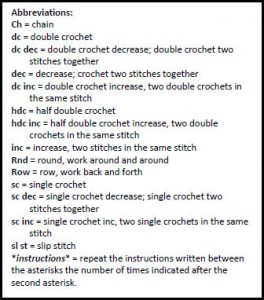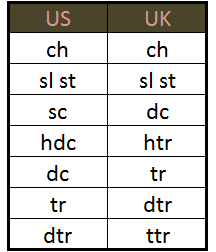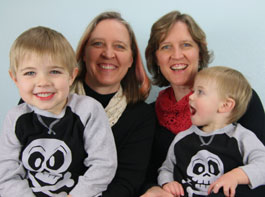Crochet Abbreviations
 Reading a pattern full of abbreviations can feel a bit overwhelming. It can also be very entertaining. Some girlfriends asked me to teach them how to crochet and I started by having them look through a magazine to show them how diverse the craft is. They started to phonetically read the patterns and we all laughed at how strange it sounded.
Reading a pattern full of abbreviations can feel a bit overwhelming. It can also be very entertaining. Some girlfriends asked me to teach them how to crochet and I started by having them look through a magazine to show them how diverse the craft is. They started to phonetically read the patterns and we all laughed at how strange it sounded.
It’s easier than you might think to read a pattern. Patterns try to abbreviate wherever possible to keep the instructions short and compact so that the instructions aren’t a bazillion pages long (yes, I exaggerate a bit). If you know the basic stitches (chain, slip stitch, single, half double, double crochet), then reading a pattern will be easier.
Abbreviating Crochet Terminology
Crochet language is abbreviated a couple different ways.
- The first letter of each word is used.
For example: “sc” is the first two letters of “single crochet” - The first few letters of a single word are used.
For example: “beg” is the first three letters of the word “beginning”
For example: “inc” is the first three letters for the word “increase” - There are some instances of compound abbreviations…but again, they use the principles mentioned above.
For example: “sc2tog” means single crochet 2 stitches together.
Though abbreviations have been standardized, no two designers write the same. It’s up to each designer to choose how much instruction to give and how much to condense. I’ve seen patterns that are nothing more than numbers that look like ratios (i.e. 1:7, 2:14, 3:21). My sister and I tend to write more, not less. We write step-by-step instructions so that you can duplicate our process, using common abbreviations so that our patterns are too lengthy.
Many patterns will also have an abbreviations list. Refer back to that when you get stuck with an abbreviations. Deborah and I include an abbreviations list in all our patterns.
For a list of commonly used abbreviatons, visit our Crochet Abbreviations page.
US vs. UK Terminology
Just when you think you have the language of crochet all figured out…you run into one big snag: US and UK Terminology is not the same! They may sounds the same…but they’re not.
A single crochet in US is called a double crochet in the UK.
Here is a conversion chart for US vs. UK Terminology:
Deborah and I write all our patterns in US terminology.
Problems Reading a Pattern
If you are having problems reading a pattern, you have a few options:
- Ask for help from a knowledgeable crocheter.
This could be a friend, relative or someone from a yarn shop or crochet group. - Find a different pattern for the same thing.
It could be that the writing style of the designer doesn’t work for you. See if someone else has a pattern that is easier to understand. - Educate yourself on YouTube.
You may need help with a specific stitch like the crocodile stitch. Watching videos to learn crochet stitches will make it easier to read your specific pattern. - Ask the designer.
If you are struggling with a particular spot in a pattern, you may want to touch base with the designer. There could be a problem with the pattern or with the way the instructions were written.
The best way to learn is by doing. Find a pattern for something you want to crochet and give it a try. If you need patterns, we recommend browsing through Ravelry.com.


